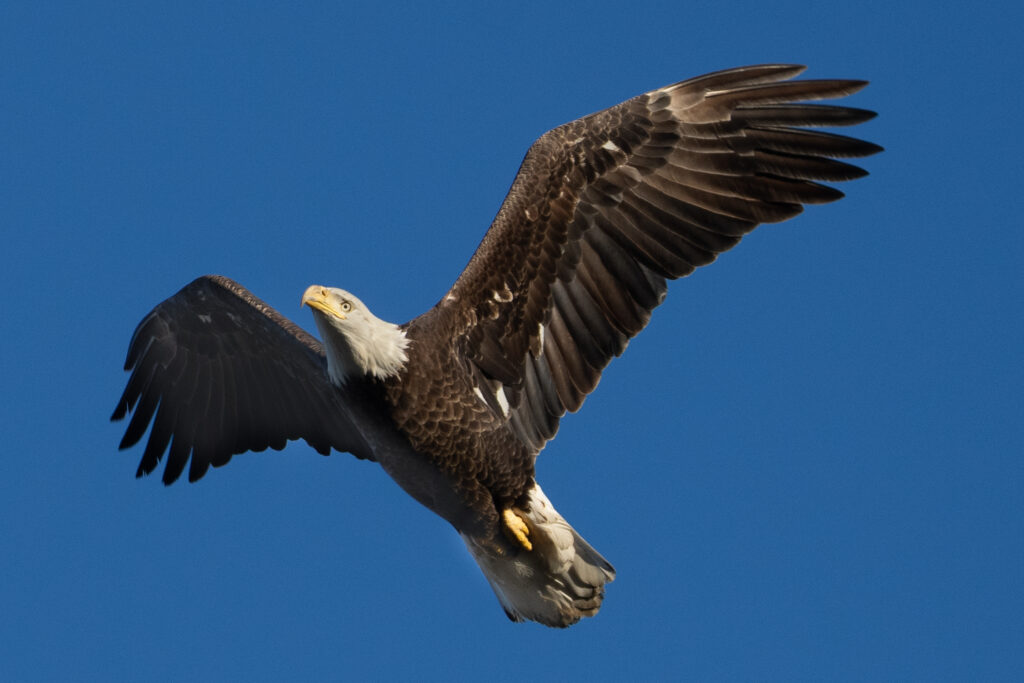In many places around the country, if you know where to go, you can see our national bird: the bald eagle. Here in Atascadero, they like to hang out around the lake and around the Salinas River near the water treatment plant. I’ve also seen them soaring above the ridge line in my neighborhood south of town.
If you haven’t been there (and I guess even if you have, but the description is needed for those who haven’t been), Atascadero Lake is a lovely little place near the center of town. A walking path goes about a mile and a half around the perimeter of the lake (if you park in the parking lot and work the trees in the park itself), which is eminently doable at whatever pace you desire. There’s a playground, a pavilion, the Charles Paddock zoo (not part of the lake park itself, but in the same parking lot), and more.
The birding here is about the best you’ll find in a nice suburban environment close to downtown Atascadero. Depending on the time of year, ducks, pelicans, cormorants, and many of your typical urban birds (sparrows, doves, crows, warblers, woodpeckers) are abundant. The ebird checklist for the site has tallied 193 different species, although a typical day will yield about three dozen species. (The experts birding during last year’s Morro Bay Bird Festival in January counted 44.)
The lake is about 30 acres in size, although it varies over the course of wet and dry years: back in 2014, the drought was so bad that people thought it might disappear altogether, whereas after the storms of the winter of 2023, it was about as full as it could be (max capacity is claimed to be just over 68 million gallons).
There’s a webcam showing current conditions at the lake.
The water treatment plant, on the other hand, is a more difficult place to bird. It’s more isolated (across the railroad tracks behind Chalk Mountain), the best birds are on the other side of a tall chainlink fence and almost 1,000 feet away, and you have to walk a narrow path along the fence perimeter that’s sometimes overgrown with weeds. Telephoto lenses or spotting scopes are almost required; binocular views typically fail to yield much information.
But the birding at the water treatment plant typically has many more duck species than the lake (on consecutive days I counted four duck species at the lake and eight at the treatment plant), and because the percolation ponds by their very design have a huge littoral zone, there are usually many more shorebirds as well. And the treatment plant has shown (very) slightly more diversity of species than the lake (195 according to ebird’s latest tally, to the lake’s 193). And, from time to time, an eagle in a tree in the riverbed.
This January, I found a fairly cooperative eagle in each place on two consecutive days:




